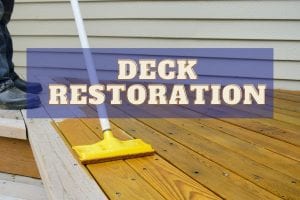Your Comprehensive Guide to Revitalizing Your Deck
A deck serves as a vital extension of many Australian residences, significantly enhancing our lifestyle. Decks not only add functional living space but also provide a serene area to bask in the warmth of the sun or enjoy cool breezes in the mornings. Furthermore, they become vibrant gathering spots for family and friends, making them perfect for hosting delightful BBQs and social events during the afternoons and evenings.
Due to their constant exposure to the intense Australian climate, including scorching sun and unpredictable rain, regular upkeep is essential to address any potential damage. This maintenance is crucial in safeguarding your outdoor areas and preventing more serious, costly problems down the line. By committing to routine deck restoration, you can ensure your deck remains in pristine condition for years to come, effectively enhancing its overall appearance and functionality.
Follow This Step-by-Step Guide to Transform Your Outdoor Space!
-
Conduct a Thorough Inspection of Your Deck’s Surface
The effects of harsh weather conditions, including intense UV rays, sweltering heat, and heavy rainfall, can cause significant damage to your deck’s structure over time. Therefore, before diving into your deck restoration project, it’s crucial to start with a meticulous inspection of the deck surface. Look for any loose deck boards, which could pose safety risks, and examine for structural issues like rotting or cracked boards that require immediate attention.
During this inspection, don’t forget to check the railings and any connected structures like a pergola, as these areas may also need repairs. Removing debris is essential, so utilize a leaf blower or broom to clear the surface effectively. A scraper can also be handy for eliminating dirt and debris that may have become trapped between deck boards, ensuring a clean workspace for the upcoming restoration steps.
-
Perform a Light Cleaning of Your Deck
The method you choose for cleaning your deck largely depends on its finish and your specific restoration goals. If you’re working on a deck that has previously been painted, it may be necessary to use a paint remover to strip away the old paint. After this, thoroughly clean and sand the surface to prepare it for a new stain or finish. On the other hand, if your deck has only been stained, you won’t need a paint remover; a simple deck cleaner will suffice.
When performing these tasks, it’s important to wear protective clothing, such as gloves, to safeguard yourself from harmful splashes and fumes. If your deck has a stain, consider using an oxygen-based wood cleaner, which is particularly effective for removing mildew stains and the graying caused by UV exposure. These cleaners not only clean but also rejuvenate the wood surface, eliminating any accumulated dirt and deposits.
-
Deep Clean Your Deck with a High-Pressure Cleaner
Deep cleaning represents a crucial phase in your deck restoration journey. A power washer can be an invaluable tool for this task, but caution is essential. If not used correctly, it can wreak havoc on your deck and surrounding areas. Applying too much water pressure or using the wrong sprayer technique risks damaging the wood surface and may even destroy the paint on nearby structures.
When utilizing a power washer for deep cleaning, ensure that you set the pressure to the minimum necessary for effective cleaning. For softer woods like pine or cedar, a pressure setting of around 500 to 600 pounds per square inch (psi) is recommended. For harder woods, you can increase the pressure, but it should not exceed 1200 to 1500 psi to prevent any potential damage to your deck.

After using a power washer, the wood fibers in your deck boards will swell due to moisture. Once dried, these fibers can create rough surfaces with splinters, making it essential to sand the entire area before applying any stain. Sanding is a critical step to ensure a smooth finish and proper adhesion of the stain or paint.
Utilizing an orbital sander can simplify the sanding process, but selecting the right sandpaper is crucial for achieving optimal results. If the sandpaper is too fine, it may leave behind dust that clogs the wood pores and hinders stain absorption. Conversely, sandpaper that is too coarse can damage softer woods like cedar, so it’s important to strike a balance.
For the main deck boards, a sandpaper grit of 60 or 80 is ideal, while for handrails, you may use a grit of 80 or 100. Once sanding is complete, ensure you sweep and vacuum all surfaces thoroughly. It’s advisable to avoid washing the deck again, as this can cause the wood grain to swell and complicate the sanding surfaces. Taking the time to properly prepare your deck is vital for achieving a flawless finish.
Since sanding generates a lot of dust, wearing safety equipment, including eye protection and a mask, is highly recommended to protect yourself during this process.
-
Selecting the Right Timber Stain for Your Deck
Choosing the appropriate stain is one of the most critical decisions in your deck restoration project. Various types of staining products are available, including semi-transparent stains that allow the natural wood grain to show through. Alternatively, opaque stains can completely cover the wood grain, offering a different aesthetic appeal.
You’ll also encounter oil-based and water-based stains. Water-based stains are known for their easy cleanup, but most experts agree that oil-based stains generally provide a longer-lasting finish. A high-quality oil-based stain is often recommended for outdoor use, as it penetrates the wood grain deeply, ensuring durability.
Keep in mind that the final color of the stain may differ from what is depicted on the color brochure due to factors such as the type of wood being stained. Many manufacturers provide comparison charts to illustrate how colors appear on different timbers, so it’s wise to consult these resources before making your selection.
-
Mastering the Application of Deck Stain
The application of the stain marks the final step in your deck restoration project. To achieve a professional-looking finish, it is essential to use the right brush or roller to ensure even distribution of the stain across the timber surface. The right tools can make a significant difference in the consistency and quality of your staining process.
Before you start staining, ensure that your deck is completely dry; this is crucial for successful absorption of the stain. A drying period of approximately two days is recommended after cleaning. Any residual moisture in the wood pores can prevent the stain from penetrating effectively, leading to unsatisfactory results.
While deck restoration may seem like a daunting task, don’t hesitate to seek assistance from professional Brisbane deck builders if you feel overwhelmed. However, if you are confident in your abilities and have the time, by following these detailed steps, you can successfully rejuvenate your old deck and make it look as good as new!
The post Deck Restoration Guide appeared first on GQ Central.


Comments are closed